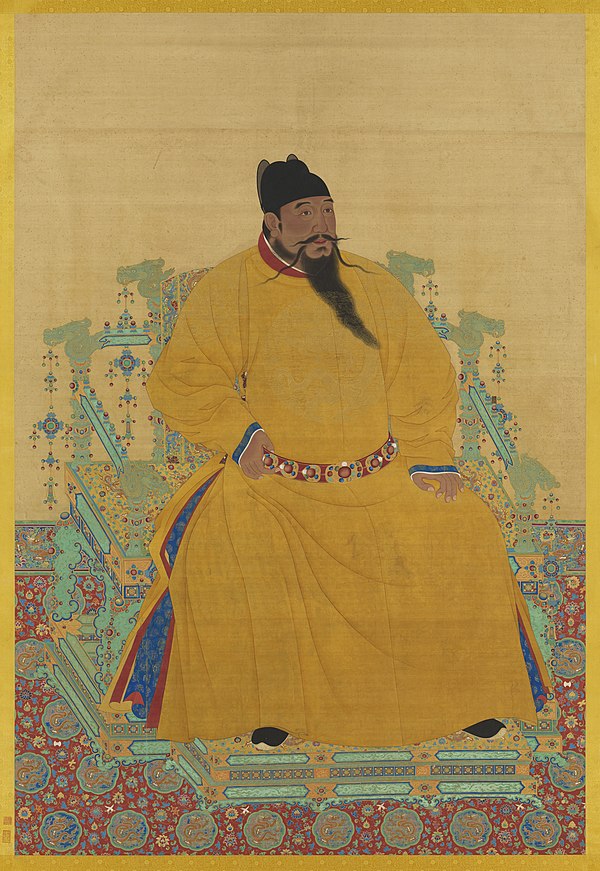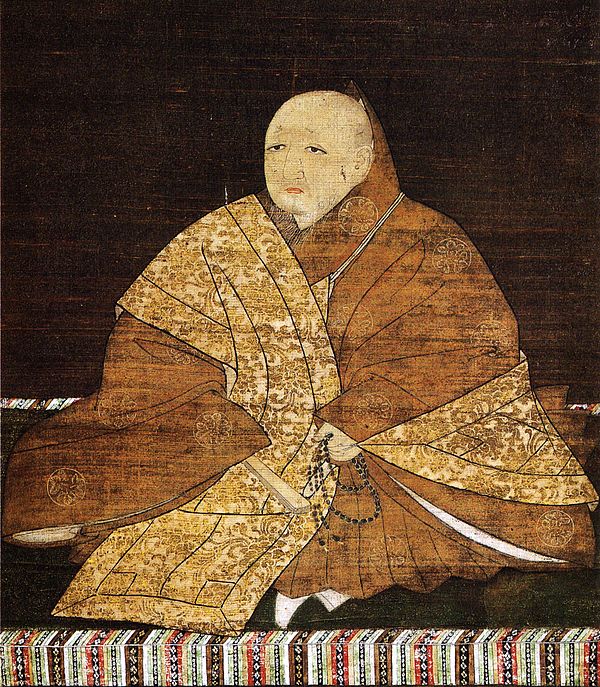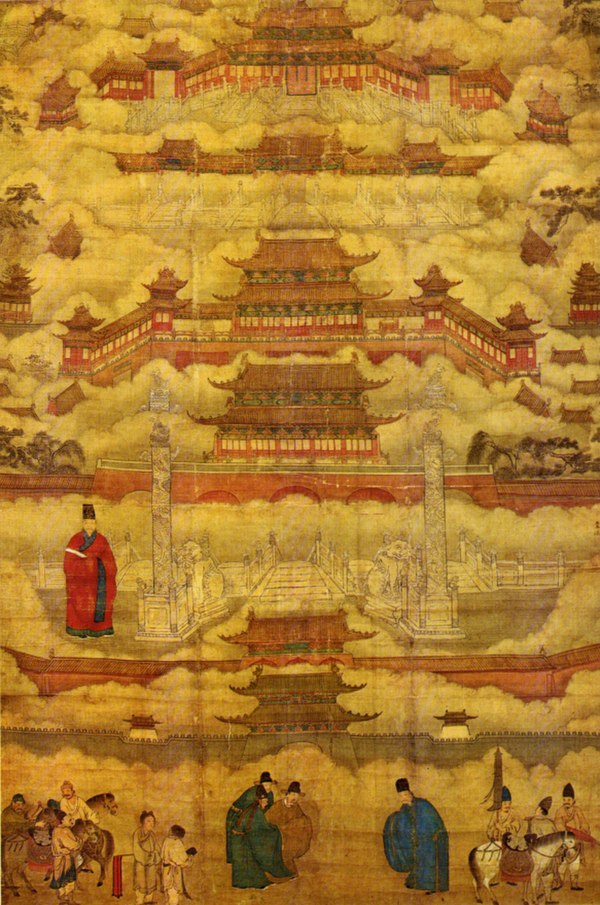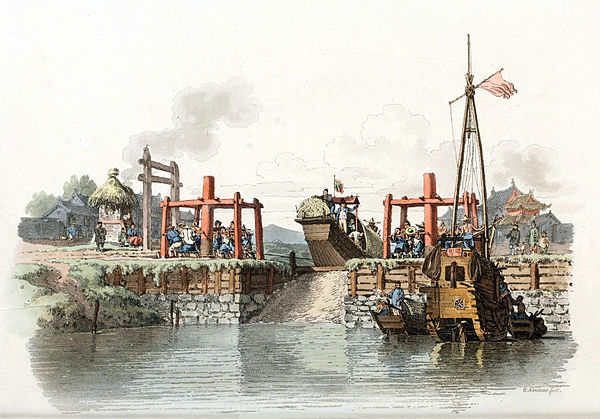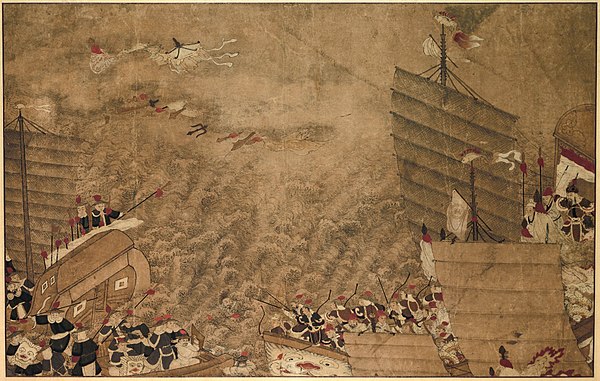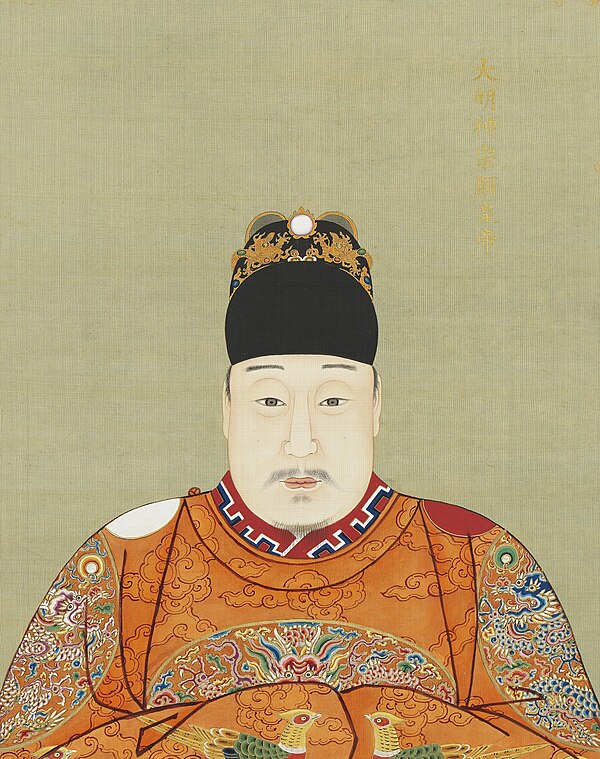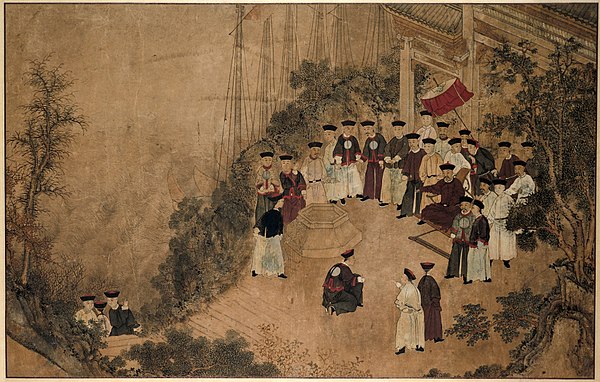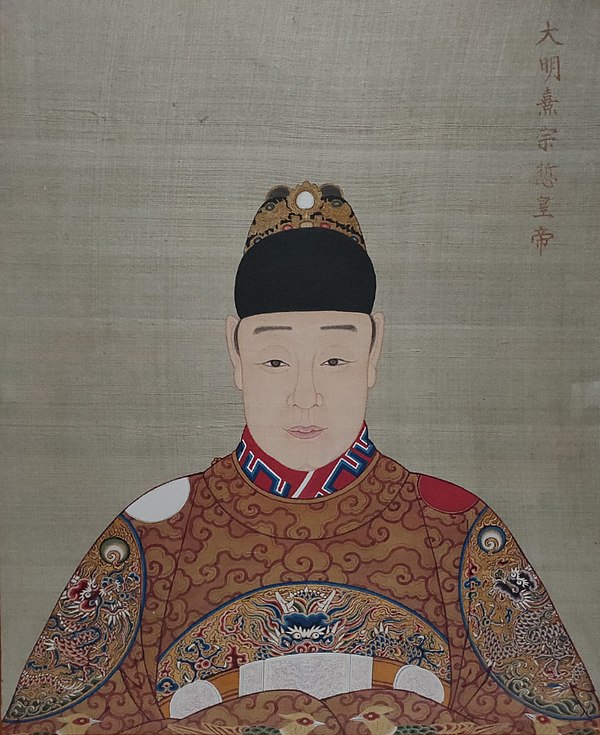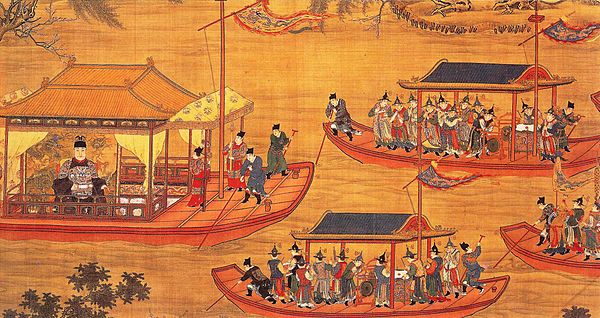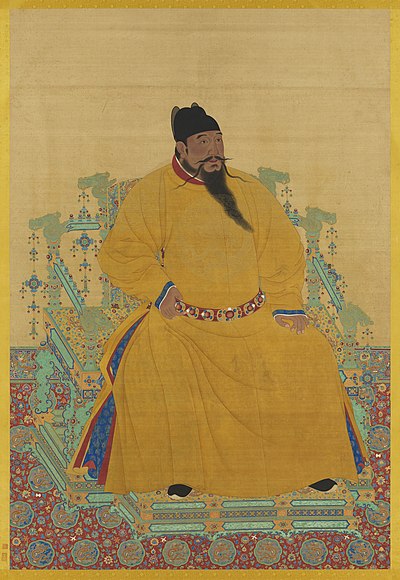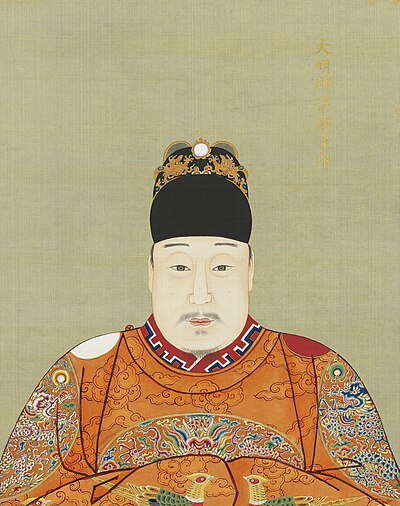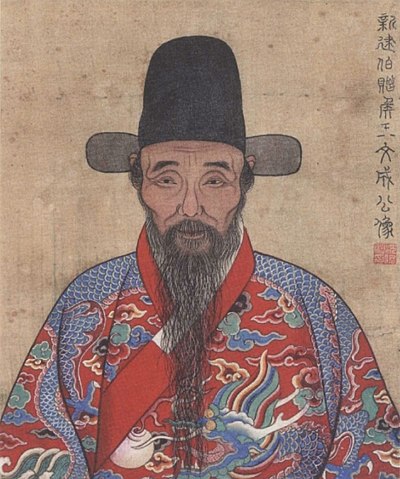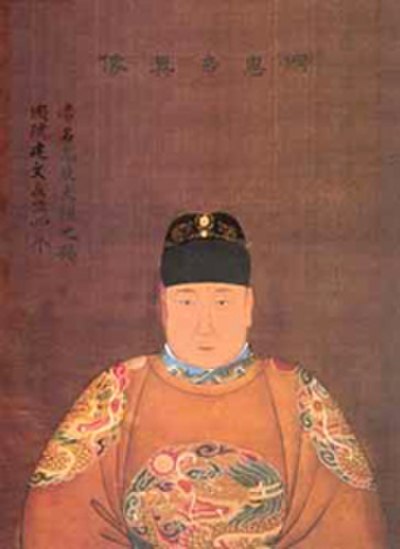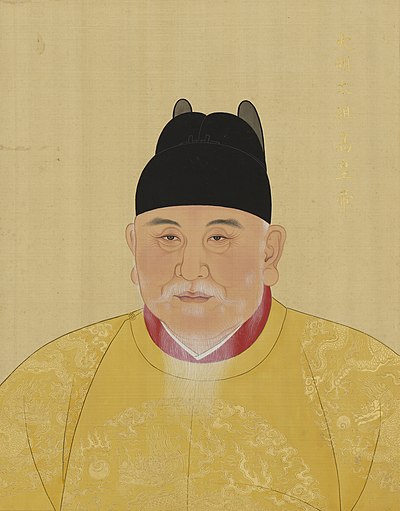The Hongwu Emperor, personal name Zhu Yuanzhang was the founding emperor of the Ming dynasty, reigning from 1368 to 1398.
As famine, plagues and peasant revolts increased across China proper in the 14th century, Zhu Yuanzhang rose to command the forces that conquered China proper, ending the Mongol-led Yuan dynasty and forcing the remnant Yuan court (known as Northern Yuan in historiography) to retreat to the Mongolian Plateau. Zhu claimed the Mandate of Heaven and established the Ming dynasty at the beginning of 1368 and occupied the Yuan capital, Khanbaliq (present-day Beijing), with his army that same year.
The emperor abolished the position of chancellor, drastically reduced the role of court eunuchs, and adopted draconian measures to address corruption. He encouraged agriculture, reduced taxes, incentivized the cultivation of new land, and established laws protecting peasants' property. He also confiscated land held by large estates and forbade private slavery. At the same time, he banned free movement in the empire and assigned hereditary occupational categories to households. Through these measures, Zhu Yuanzhang attempted to rebuild a country that had been ravaged by war, limit and control its social groups, and instill orthodox values in his subjects, eventually creating a strictly regimented society of self-sufficient farming communities.
The emperor built schools at all levels and increased the study of the classics as well as books on morality. Neo-Confucian ritual manuals were distributed and the civil service examination system for recruitment into the bureaucracy was reintroduced.







